Overexposure: Influencer Saturated Locations and Where to Go to Avoid Them.
- Ian
- May 28
- 14 min read
Updated: Jun 5

Twenty-one years ago almost to the day I was standing in Oia, a small town located on the northern tip of Santorini (seen above). I had my Canon SLR camera loaded with film and was taking a photo, seen above, of one of the loveliest sunsets I've ever witnessed. This was a few years before smart phones, and even cell phones were just gaining traction. I certainly didn't have one. Facebook had only just broken onto the scene a couple of months earlier so needless to say social media was an infant and, thankfully, there were no such things as influencers. There were a few tourists, but it was almost deserted; serene and pristine. Glorious.
Jumping ahead a couple decades the scene is one of chaos. Throngs of people with their selfie sticks and streaming content have overwhelmed the once quiet and quaint seaside village. Influencers crowd out everyone all vying for that perfect shot much to the chagrin of every other traveler and all of the locals. This scene has been repeated in so many places around the world that the locals have said enough. Fences are put up in some picturesque destinations to prevent the selfish selfie masses and some places have enacted bans on tourists allowing only locals to drive their roads at certain times of the year.
Since this social media driven genre of people have been flooding the most popular spots it seems impossible to find somewhere that you can go to get that magical photo you have always wanted to put up on the wall. In this blog we will explore the top ten worst destinations for these irreverent invaders, and we will look into some of the still relatively unaffected and picturesque locations one can still go.
Overcrowded: The Top Ten Influencer Locations
1. Santorini, Greece

The iconic Greek island has become a victim of its own photogenic appeal. Tourism authorities report that viewpoints in Oia regularly reach capacity before sunrise, with lines forming as early as 4:30 AM. As for the more popular sunset photos? Forget about it. Local municipalities have begun implementing visitor caps after residents complained about being unable to navigate their own neighborhoods during peak season.
The Stats
Annual visitor numbers have surged from 1.2 million in 2010 to 5.5 million in 2023, representing a 358% increase. The Greek National Tourism Organization reports that 78% of visitors now cite Instagram as their primary information source for planning their trip. Daily cruise ship arrivals have increased from an average of 2-3 vessels to 8-12 during peak season, with some days seeing over 18,000 day-trippers on an island with just 15,550 permanent residents. Hotel rates in Oia have increased by 420% since 2015, with sunset-view rooms commanding up to €800 per night. Local authorities implemented a daily visitor cap of 8,000 cruise passengers in 2024 after sewage systems reached capacity limits.
2. Bali's Jungle Swings, Indonesia

What began as two original swings has expanded to 47 commercial operations, with prices ranging from $15-35 per experience.. Environmental impact studies show soil erosion and vegetation damage in surrounding areas, while cultural heritage sites nearby receive a fraction of the visitors despite their historical significance.
The Stats
The Ubud region recorded a 650% increase in visitors between 2014 and 2023, with jungle swing attractions generating over $50 million annually. Indonesian environmental groups document that forest cover in swing areas has decreased by 23% to accommodate parking and staging areas. The Bali government now requires environmental impact assessments for new swing installations after soil erosion affected local water sources. Peak season wait times average 2-3 hours, with some operators reporting daily throughput of 800+ visitors at single locations.
3. Tulum, Mexico
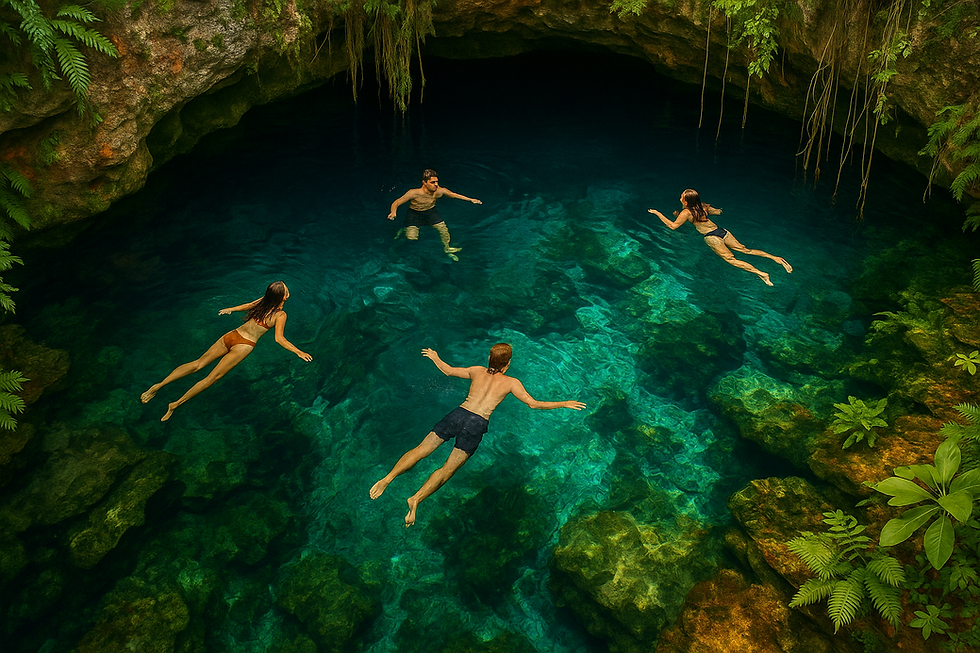
Real estate prices in this formerly affordable coastal town have increased 340% in five years, forcing 60% of service workers to Playa del Carmen or beyond. This local workforce that supports the tourism industry now commutes from up to two hours away as housing has been converted to short-term rentals and boutique hotels designed specifically for social media appeal.
The Stats
Tourism to Tulum has increased 1,200% since 2010, with visitor numbers jumping from 170,000 to 2.2 million annually. Hotel occupancy rates maintain 85%+ year-round compared to Mexico's national average of 62%. The once-free beach access now involves fees at most entry points, with beachfront dining averaging $45 per person compared to $8 in nearby traditional Mexican restaurants. UNESCO has placed Tulum's archaeological site on a watch list due to overtourism pressure, with daily visitor limits reduced from unlimited to 3,000 in 2023.
4. Antelope Canyon, Arizona

Navajo Nation tourism officials have implemented strict time limits for visitors after throughput reached unsustainable levels. Photography-specific tours command premium prices while traditional cultural tours have declined in popularity despite offering deeper insights into the sacred site. The site is a geological wonder as well with the swirling rock patterns a result of the winds depositing and shaping sand dunes over millions of years through aeolian deposition. Once it became the Navajo Sandstone water and to a lesser extent carved out the slot canyons over time.
The Stats
Visitor numbers to both Upper and Lower Antelope Canyon have grown from 50,000 in 2010 to over 400,000 in 2023. Photography tour prices have escalated from $35 in 2015 to $200+ for prime time slots, with advance booking windows extending to 6 months. The Navajo Nation reports tourism revenue from the canyon has increased 750% in eight years, now generating over $15 million annually. However, cultural interpretation has diminished, with photography-focused tours comprising 80% of bookings compared to 25% a decade ago. Parking infrastructure has expanded four times since 2018 to accommodate the influx, fundamentally altering the desert landscape surrounding the canyon entrance.
5. Trolltunga, Norway
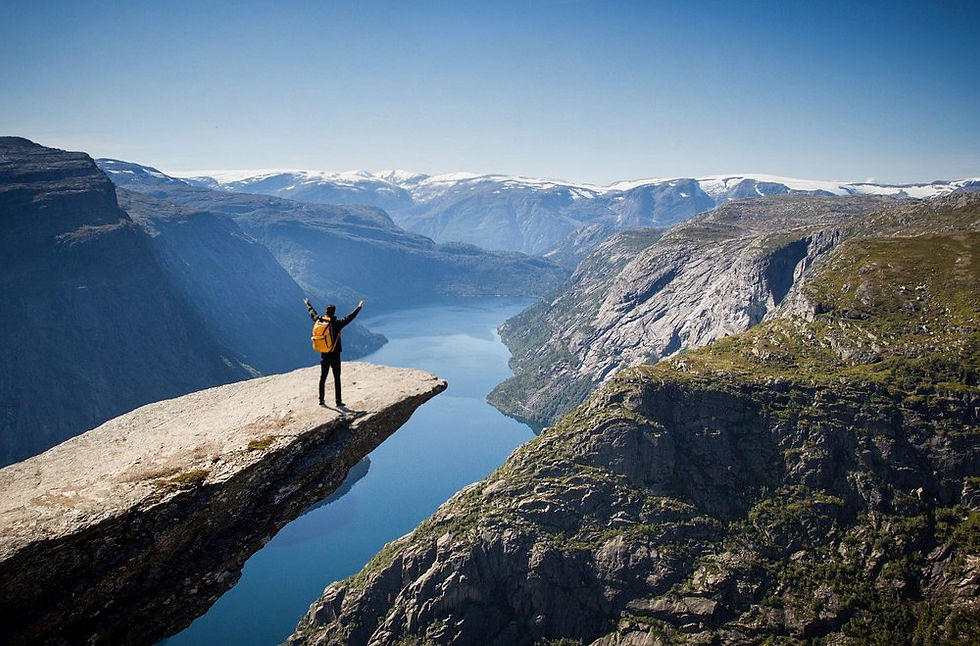
Search and rescue operations have increased by 220% in five years according to Norwegian mountain rescue services, as unprepared and oblivious visitors attempt the challenging hike for the photo op. These operations increased from 2-3 incidents annually to 45+ incidents in 2023, costing taxpayers approximately $890,000. Helicopter evacuations alone account for 15-20 incidents yearly, compared to zero before 2015. The once-rugged trail has required extensive reinforcement to handle the increase in visitors, fundamentally changing the landscape.
The Stats
Annual hiking permits have increased from 3,000 in 2009 to over 100,000 in 2023, with 40% of visitors traveling from outside Europe specifically for social media content. The Norwegian Trekking Association spent $2.3 million on trail reinforcement and safety infrastructure between 2018-2023. The hike's Instagram hashtag has generated over 2.8 million posts, while wait times at the rock formation average 90 minutes during peak summer days.
6. Chefchaouen, Morocco

This blue-painted city has seen daily visitor numbers quadruple since 2017. Municipal records show that over 60% of businesses in the historic medina now cater exclusively to tourists, replacing the shops that once served local needs and traditional craft shops have declined from 120 to 34 as these spaces were converted to tourist-focused businesses.. Property owners increasingly paint buildings in more vibrant blues specifically for photography rather than following traditional methods.
The Stats
This mountain town of 40,000 residents now receives over 500,000 visitors annually, up from 85,000 in 2012. Tourism accounts for 73% of the local economy compared to 35% before social media popularity began. Property speculation has increased rent prices by 280% for locals. The municipality spends $180,000 annually on additional blue paint and building maintenance due to increased photo-taking wear and tear. Water consumption has tripled during peak months, straining infrastructure designed for the permanent population.
7. Lake Louise, Canada

Parks Canada has implemented a shuttle-only access system after tourist congestion reached critical levels. Environmental monitoring shows increased erosion along shorelines where popular photo compositions are taken, with vegetation unable to recover between visitor seasons. This limitation was long overdue. This spectacular lake, as well as the equally beautiful Moraine lake, have been long imprinted in my memory throughout my residence in the province. I've been there as a child of 5 or 6, to as recently as 3 years ago. The change to the area has been remarkable and devastating to the local environment.
The Stats
Visitor numbers have grown from 3.2 million in 2010 to 6.8 million in 2023, with parking lots reaching capacity by 8 AM during summer months. Parks Canada implemented a mandatory reservation system in 2021 and the shuttle service after traffic backups extended 15 kilometers from the lake. The lake's Instagram hashtag features over 1.9 million posts, with 67% uploaded during a four-month summer window. Hotel rates in the area have increased 195% since 2015, while day-use permits now cost $12 per vehicle compared to previously free access. Environmental monitoring shows shoreline vegetation damage at 23 popular photography spots, requiring $340,000 in restoration efforts over three years.
8. Cappadocia, Turkey

The region's famous hot air balloon experiences now involve more than 150 balloons launching simultaneously during peak season. I remember staying at an amazing cave pension during my first trip to Cappadocia and it was unbelievably inexpensive (maybe $20/night). It was a stunning and unique landscape to behold with previous volcanic eruptions having eroded away in varying fashions creating the Fairy Chimneys the region is so well known for. There were very few other tourists and perhaps a couple of balloon tour operators and I remember the hospitality of the locals was so genuine and prevalent.
The Stats
Hot air balloon operations have expanded from 25 companies in 2010 to 89 in 2023, with daily launches increasing more than doubling during peak season since then. Tourism revenue for the region has grown from $280 million to $1.2 billion annually, with 78% of visitors citing social media as their primary motivation. Hotel occupancy averages 94% compared to Turkey's national rate of 68%, driving accommodation costs up 310% in five years, while ground-level tourist infrastructure struggles to keep pace. The Turkish Directorate General of Civil Aviation implemented new flight restrictions after near-miss incidents increased, limiting simultaneous balloon operations to preserve safety. Instagram posts featuring Cappadocia balloons exceed 3.4 million, with professional photography tours now comprising 45% of bookings.
9. Positano, Italy

The Amalfi Coast town's narrow streets now regularly exceed safe pedestrian capacity according to urban planning experts. Local administrators have begun limiting day visitors, while restaurants report that many visitors come only for photos without making purchases, affecting the economic sustainability of tourism. Having been there a few times in the last decade I've witnessed the progression from a beautiful haven to an overcrowded mess. I love the town still, but during my last visit there ( a brief stop on a boat trip down to Amalfi in 2024) I was so disappointed at how bad it had become in such a short span. To anyone who has been there you know the town is a cliffside town with very narrow and sometimes steep pedestrian passages and only one main road that loops through the town. Some of those passages create congestion points such that I was literally having to elbow people out of the way while the blocked the flow of traffic to take their selfies in front of shops and landmarks.
The Stats
This town of 4,000 residents now hosts over 800,000 visitors annually, up from 220,000 in 2010. Summer months see daily visitor numbers reaching 15,000-20,000, with the town's infrastructure designed for 6,000. Restaurant wait times average 2.5 hours during peak season, while many establishments report 40% of diners leave after taking photos without ordering. Property values have increased 275% since 2015, with short-term rentals now comprising 60% of available housing. The regional government implemented a €2 daily tourist tax in 2023 and restricts vehicle access between 8 AM-6 PM during summer months. The Amalfi coast road also has some heavy restrictions placed on it due to the massive traffic jams that regularly occurred. As a result of the limitations on driving the road, ferry ticket prices have more than doubled due to demand, with advance booking required up to 3 weeks ahead.
10. Phuket's Phi Phi Islands, Thailand

These islands made famous by "The Beach" have suffered severe coral reef damage, with coral reef health declining by 77% according to marine biologists, with boat anchoring damage contributing significantly to degradation. Periodic closures have been implemented to allow ecosystem recovery, though tourism pressure remains intense during open periods.
The Stats
Daily visitor numbers to the islands have grown from 2,500 in 2010 to over 15,000 in 2023, despite periodic closures for environmental recovery. Maya Bay alone was receiving 5,000+ daily visitors before its closure for rehabilitation, compared to 400-500 in pre-social media years. Tourism generates $180 million annually for the local economy, but restoration costs have reached $45 million over five years. The Thai government now limits daily visitors to 2,000 at Maya Bay and requires advance permits, while implementing a mandatory environmental fee of 400 baht ($11) per visitor.
Top 10 Photogenic destinations without (most) Influencer Crowds
1. Svaneti, Georgia
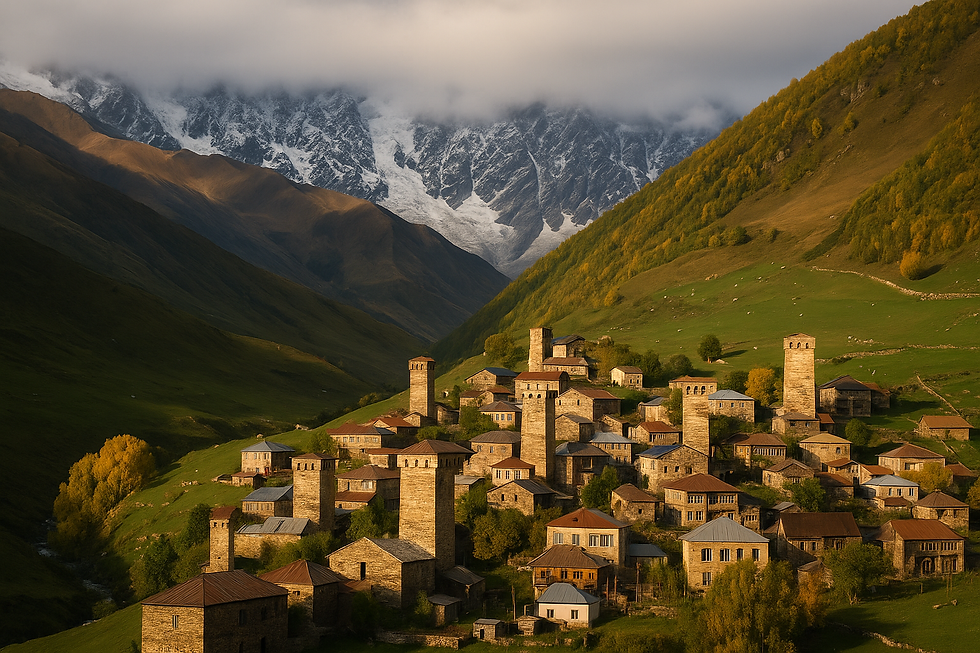
This mountainous region offers Caucasus vistas rivaling the Alps but receives less than 5% of the visitors. UNESCO-protected medieval stone towers dot landscapes perfect for photography, while infrastructure improvements make the area increasingly accessible to thoughtful travelers.
The Stats
This World Heritage region receives approximately 45,000 visitors annually compared to 12 million for Georgia's popular destinations. Tourism infrastructure development has increased accommodation options by 180% since 2018, yet maintains fewer than 200 beds total across the region. The area features over 175 medieval defensive towers, with some dating to the 12th century, offering unique architectural photography opportunities. Local guesthouse rates average $25-35 per night, with traditional supra feasts available for under $15 per person. The Georgian government invested $8.2 million in road improvements in 2022, reducing travel time from Tbilisi from 8 hours to 5 hours while maintaining the region's isolation from mass tourism.
2. Salento, Colombia
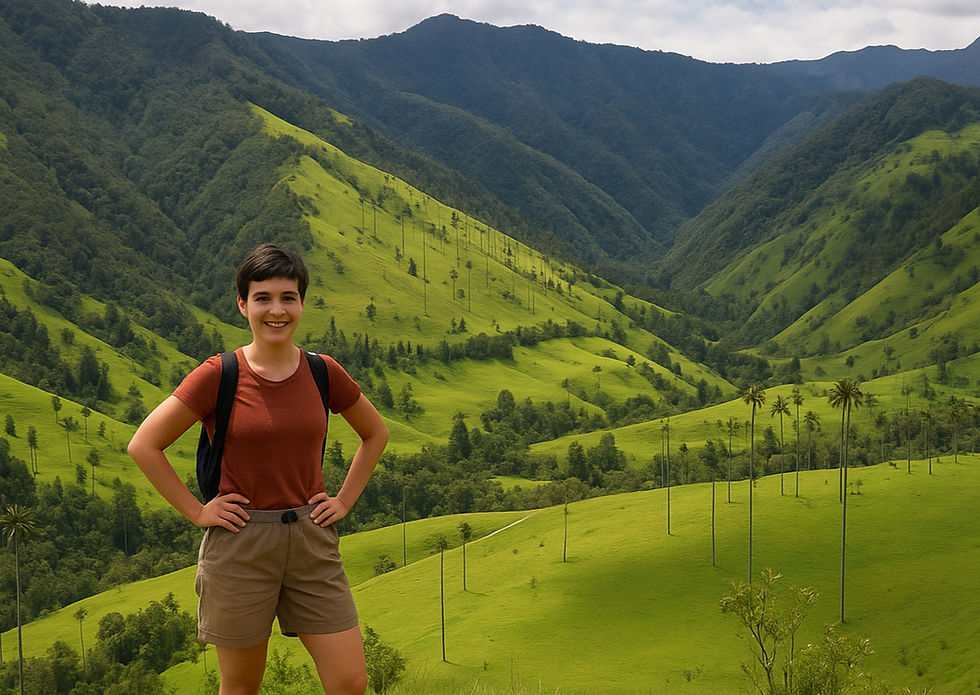
The coffee region provides colorful architecture and lush mountain backdrops without the crowds of more publicized South American destinations. Tourism development authorities have implemented sustainable growth plans prioritizing community benefit over rapid expansion.
The Stats
This town of 7,000 residents receives roughly 180,000 visitors annually, significantly lower than Colombia's established tourist circuits. Coffee farm tours cost $8-15 compared to $50+ in more commercialized regions, with authentic farm-to-cup experiences still operated by families rather than tour companies. The area produces 15% of Colombia's premium coffee yet receives less than 3% of coffee tourism visitors. Accommodation averages $20-40 per night in family-run hostels and fincas. The famous Cocora Valley's wax palm forests remain uncrowded, with hiking trails seeing fewer than 50 daily visitors even during peak season, compared to hundreds at more publicized natural attractions.
3. Comporta, Portugal

Often overlooked for the Algarve, this coastal region offers pristine beaches and rice field landscapes within two hours of Lisbon. Local agricultural traditions continue alongside modest tourism development, creating authentic cultural interactions.
The Stats
This region receives approximately 95,000 visitors annually compared to 4.2 million for the Algarve. The rice field landscapes are unique in Western Europe and provide distinctive photography opportunities unavailable elsewhere. Beach clubs and restaurants remain family-owned, with meal costs 40-60% lower than comparable Algarve establishments. The region maintains working rice paddies and traditional fishing practices, offering authentic cultural experiences. Property development is restricted by environmental protection laws, maintaining the area's undeveloped character while providing sustainable tourism income to 2,500 permanent residents.
4. Madagascar's Avenue of the Baobabs

Despite offering one of the world's most unique tree landscapes, visitor numbers remain manageable due to the challenging logistics of reaching this remote location. Conservation efforts work with local communities to ensure tourism benefits those protecting the ancient trees.
The Stats
Featuring 800-year-old trees found nowhere else on Earth, this site still receives fewer than 15,000 visitors annually due to Madagascar's location. Photography permits cost $5 compared to hundreds charged at commercialized natural wonders elsewhere. Local communities receive direct income from tourism through guide services and craft sales, with average daily wages for guides reaching $25 compared to $3 for agricultural work. Conservation efforts funded by tourism have increased baobab seedling survival rates by 340% since 2018. Accommodation in nearby Morondava averages $15-30 per night, with authentic Malagasy cuisine available for under $8 per meal.
5. Faroe Islands

These North Atlantic islands feature dramatic coastal landscapes without Iceland's visitor numbers. The autonomous Danish territory has implemented a tourism strategy focusing on high-value, low-impact visitation that respects both environment and culture. The Faroe islands are also known for their intricate network of tunnels that crisscross the archipelago. The 18 islands that make up the Faroe Islands has now 20 tunnels, 3 of which three are long tunnels under the North Sea. Three of these tunnels are subsea which takes you under the North Sea between islands. In one of the longer tunnels some 72 meters below the surface, can be found the worlds first under water roundabout (traffic circle).
The Stats
These islands receive approximately 130,000 visitors annually, compared to 2.3 million for Iceland despite similar dramatic landscapes. Tourism contributes 15% to the local economy while maintaining sustainable levels that don't overwhelm the 53,000 resident population. Helicopter connections between islands cost $30-50, providing unique aerial photography opportunities unavailable elsewhere. Traditional grass-roof houses remain inhabited and functional rather than serving as tourist displays. The government's tourism strategy explicitly prioritizes visitor experience over volume, with infrastructure investments focused on quality rather than capacity expansion.
6. Puglia, Italy

The heel of Italy's boot offers whitewashed towns reminiscent of Greece but with significantly fewer visitors. Agricultural tourism connects travelers with authentic production methods for the region's renowned olive oils and wines.
The Stats
This region receives 2.8 million visitors annually, still a lot yes, but sparse by comparison to 65 million for the country overall, despite offering coastlines rivaling those of overcrowded destinations. Masseria farmstays cost 50-70% less than equivalent accommodations in Tuscany while providing similar cultural experiences. The region produces 40% of Italy's olive oil yet receives minimal culinary tourism compared to more famous food regions. Traditional trullo houses remain functional homes rather than tourist attractions, with some offering authentic family dining experiences for €20-25 per person. Beach access remains free at most locations, contrasting with paid beach clubs elsewhere in Italy.
7. Kyrgyzstan's Song Kul Lake
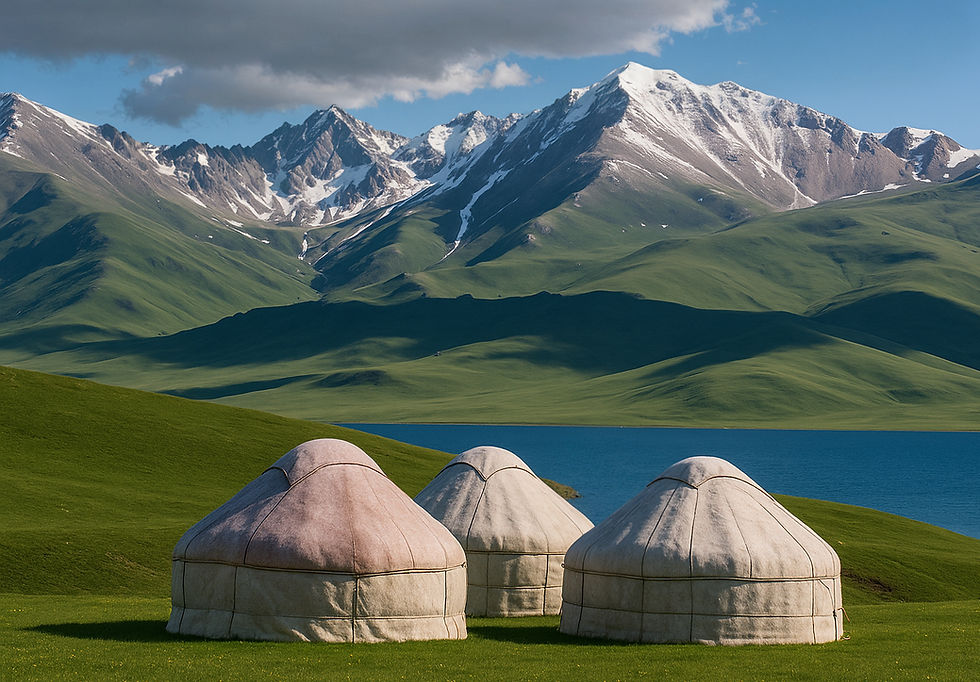
This high-altitude alpine lake delivers panoramic mountain vistas with near solitude. Community-based tourism initiatives ensure visitor spending directly benefits local nomadic families who maintain traditional lifestyles.
The Stats
This lake found at 3,016 meters receives fewer than 8,000 visitors annually despite offering panoramic mountain views comparable to more famous Alpine locations. Community-based tourism ensures $40-60 daily spending per visitor goes directly to nomadic families rather than international operators. Yurt accommodations cost $15-25 per night including traditional meals, with horseback riding experiences at $20 per day compared to $100+ in commercialized destinations. The lake remains ice-free only 4-5 months yearly, creating exclusive seasonal access that naturally limits overtourism. Transportation requires 4-wheel drive vehicles, maintaining the destination's adventure character while filtering out casual visitors.
8. Banteay Chhmar, Cambodia
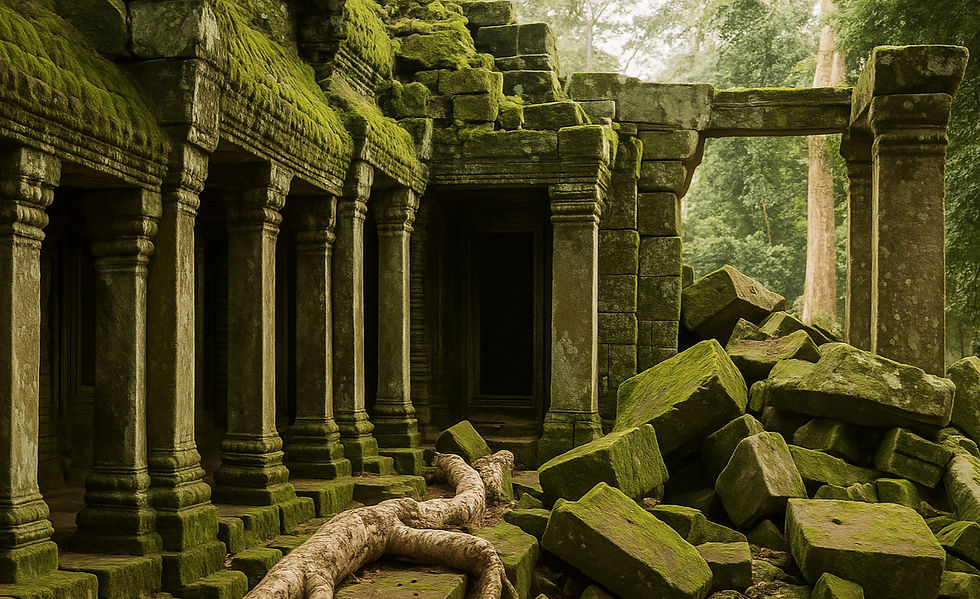
This 12th-century temple complex covers 10 square kilometers yet receives fewer than 2,000 visitors annually compared to Angkor Wat's 2.6 million. At 2000 per year that makes less than 6 a day over 10 square km so it is entirely possible that you won't see another tourist on your visit. Restoration efforts are community-led, with tourism providing sustainable income for conservation.
The Stats
Entry fees of $5 support direct community management rather than government coffers, with local families serving as trained guides for $10-15 per day. Restoration work is community-led through international partnerships, providing sustainable employment for 150+ local residents. Guesthouse accommodation costs $8-15 per night in family homes, with traditional Khmer meals available for under $5. The site's remote location requires 2.5 hours travel from Siem Reap, naturally filtering out visitors while preserving authenticity.
9. Hokkaido's Eastern Coast, Japan

While Japan's northern island draws crowds to its ski resorts, the remote eastern coastline remains largely unexplored despite offering dramatic seascapes and wildlife photography opportunities. Regional development plans focus on quality experiences rather than visitor volume.
The Stats
This region receives fewer than 200,000 visitors annually compared to 32 million for Hokkaido overall, despite offering dramatic seascapes and wildlife photography opportunities. Red-crowned crane populations provide unique wildlife photography from December-March, with viewing costs of $15-20 compared to African safari prices of $300+ daily. Onsen hot springs remain community-operated with entry fees of $3-8 rather than resort prices. Fresh seafood costs 60-70% less than Tokyo prices while maintaining superior quality and freshness. Winter ice flow phenomena create temporary landscapes unavailable elsewhere, with photography workshops available for $50-80 compared to $300+ in more commercialized locations.
10. Etosha Salt Pans, Namibia
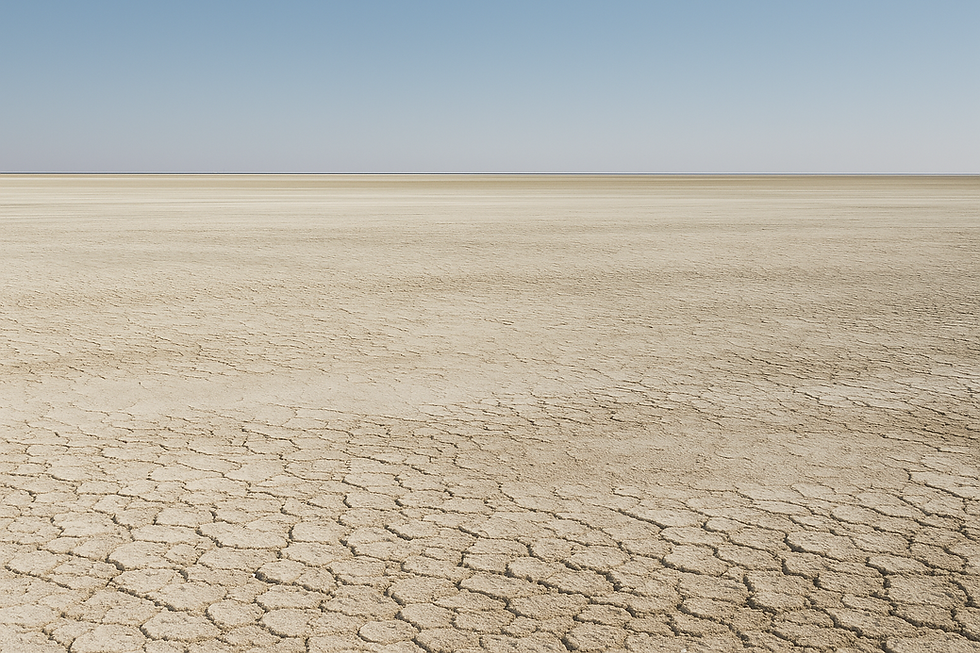
This vast landscape offers otherworldly photography opportunities and remarkable wildlife viewing without South African safari crowds. Strict vehicle limits within the national park ensure both environmental protection and exceptional visitor experiences.
The Stats
Namibia's flagship park receives 180,000 visitors annually compared to 2 million for South African game reserves, despite comparable wildlife viewing opportunities. Game drive costs average $45 per day compared to $200+ for equivalent South African experiences. The salt pan landscape covers 4,800 square kilometers, providing unique photography opportunities during both wet and dry seasons. Accommodation within the park costs $35-80 per night, with camping options at $15 per person. Wildlife viewing success rates exceed 85% for major species, with natural water holes providing concentrated animal activity. The park's size ensures visitor dispersal, with some areas experiencing fewer than 5 vehicles daily even during peak season.
Summary
Tourism researchers note that visitor patterns are shifting, with some previously overlooked destinations now developing management strategies to ensure they don't repeat the overtourism mistakes seen elsewhere. Analysts claim that authentic alternatives often provide superior value propositions, with visitors spending 40-60% less while experiencing higher satisfaction rates due to reduced crowding and increased cultural authenticity.
Sustainable tourism certification programs increasingly factor crowd levels into their assessment criteria, recognizing that visitor experience and environmental protection both benefit from thoughtful capacity management. These destinations increasingly implement proactive sustainable tourism planning to avoid the overtourism patterns seen at influencer hotspots.






Comentários